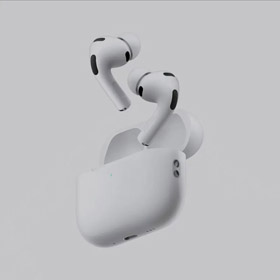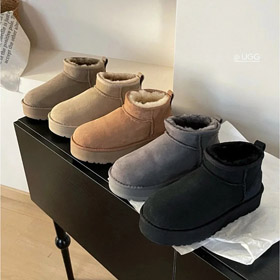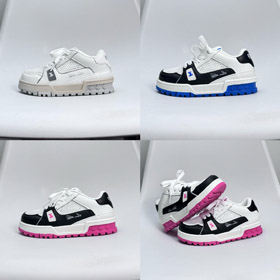Home >
The Rich History and Cultural Legacy of Gucci: A Symbol of Italian Luxury
The Rich History and Cultural Legacy of Gucci: A Symbol of Italian Luxury
2025-04-23
Gucci stands as an iconic symbol of Italian luxury, embodying a seamless blend of heritage, innovation, and timeless elegance. Founded in Florence in 1921 by Guccio Gucci, the brand has evolved from a small luggage workshop into a global fashion empire, leaving an indelible mark on the worlds of high fashion, art, and culture. Its journey is a testament to the power of craftsmanship, visionary leadership, and the ability to adapt to changing eras while preserving its core identity.
Origins and Early Foundations (1921–1950s)
Guccio Gucci, inspired by his experiences working as a baggage handler at London's Savoy Hotel, returned to his native Florence with a vision to create sophisticated, high-quality leather goods that catered to the growing demand for luxury travel accessories. In 1921, he opened his first store on Florence's Via della Vigna Nuova, specializing in handcrafted leather luggage, saddles, and equestrian-inspired items. The brand's early success was rooted in its commitment to superior materials and artisanal techniques, reflecting the rich craftsmanship traditions of Tuscany.
During the 1930s, Gucci introduced two iconic elements that would define its identity: the GG monogram (a nod to Guccio Gucci's initials) and the horsebit detail, inspired by equestrian hardware. These motifs, initially used on leather goods, became synonymous with the brand's refined aesthetic. The 1940s saw the brand adapt to wartime shortages by innovating with alternative materials, such as canvas and raffia, while maintaining its luxury appeal. The "Bamboo Bag," launched in 1947 with a distinctive bamboo handle, became an instant classic, showcasing Gucci's ability to turn constraints into creative opportunities.
Golden Age and Cultural Influence (1950s–1980s)
The post-WWII era marked Gucci's rise to global prominence. Under the leadership of Guccio's sons—Vittorio, Aldo, and Rodolfo—the brand expanded beyond leather goods into ready-to-wear fashion, accessories, and fragrances. Hollywood stars and social elites, including Grace Kelly and Audrey Hepburn, embraced Gucci, catapulting it into the spotlight. The 1953 opening of the first Gucci store in New York City signaled its international ambition.
In 1961, the Gucci Jackie Bag (originally named the "Fifties Constance Bag") was introduced, later renamed after Jacqueline Kennedy's iconic use of it. This bag became a symbol of 1960s glamour. The 1970s brought bold designs, including the double-G logo belt and vibrant prints, reflecting the era's eclectic spirit. Gucci's influence extended beyond fashion; its products became cultural artifacts, representing wealth, sophistication, and Italian craftsmanship on a global scale.
Turbulence and Reinvention (1990s–2000s)
By the 1980s, internal family disputes and overexpansion threatened the brand's legacy. However, a dramatic turnaround began in 1994 when Tom Ford was appointed creative director. Ford revitalized Gucci with a bold, sensual aesthetic, featuring provocative campaigns and figure-hugging designs that defined 1990s luxury. His collaboration with CEO Domenico De Sole transformed Gucci into a modern, sexy brand, epitomized by the "Tom Ford era" collections. Notable innovations included the Gucci Horsebit Loafer reimagined for contemporary audiences and the introduction of iconic fragrances like Gucci Envy and Gucci Rush.
In 1999, Gucci was acquired by the French conglomerate Kering (then PPR), marking a new chapter of corporate stewardship. Under creative directors like Alessandra Facchinetti and Frida Giannini, the brand balanced heritage with modernity, reintroducing classic motifs while exploring new markets and product lines, including jewelry and tech accessories.
Contemporary Renaissance (2015–Present)
In 2015, the appointment of Alessandro Michele as creative director sparked a radical reinvention. Michele's vision—rooted in eclecticism, inclusivity, and a whimsical blend of vintage and modern—ushered in a "New Romantic" era for Gucci. His collections featured bold patterns, gender-fluid designs, and nostalgic references, such as the revival of the GG Supreme canvas and the introduction of surrealist elements like oversized bows and animal motifs. Campaigns became immersive storytelling experiences, blending art, literature, and pop culture to appeal to a younger, digitally savvy audience.
Michele's Gucci also became a leader in sustainability and ethical fashion, committing to carbon neutrality and responsible sourcing. The brand's cultural relevance soared, with collaborations ranging from artists like Kenny Scharf to tech giants like Balenciaga (in the "Hacker Project" crossover). Today, Gucci remains a pioneer in merging tradition with innovation, the past with the future.
Cultural Impact and Legacy
Gucci's influence extends far beyond fashion. Its designs have been celebrated in museums, referenced in music and film, and emulated in popular culture. The brand's ability to evolve while honoring its heritage has solidified its status as a symbol of timeless luxury. From its equestrian roots to its modern-day role as a cultural tastemaker, Gucci continues to define what it means to be both classic and cutting-edge.
For those inspired by Gucci's legacy of craftsmanship and creativity, platforms like Orientdig Spreadsheet offer a curated selection of premium products that echo the brand's dedication to quality and design. While not affiliated with Gucci, such marketplaces reflect the global appetite for sophisticated, artisanal goods— a testament to the enduring allure of luxury brands like Gucci in shaping contemporary culture.
In essence, Gucci's story is one of resilience, innovation, and the timeless pursuit of beauty. It remains a benchmark for Italian excellence, a brand that has transcended generations to become a universal symbol of elegance and aspiration.



















